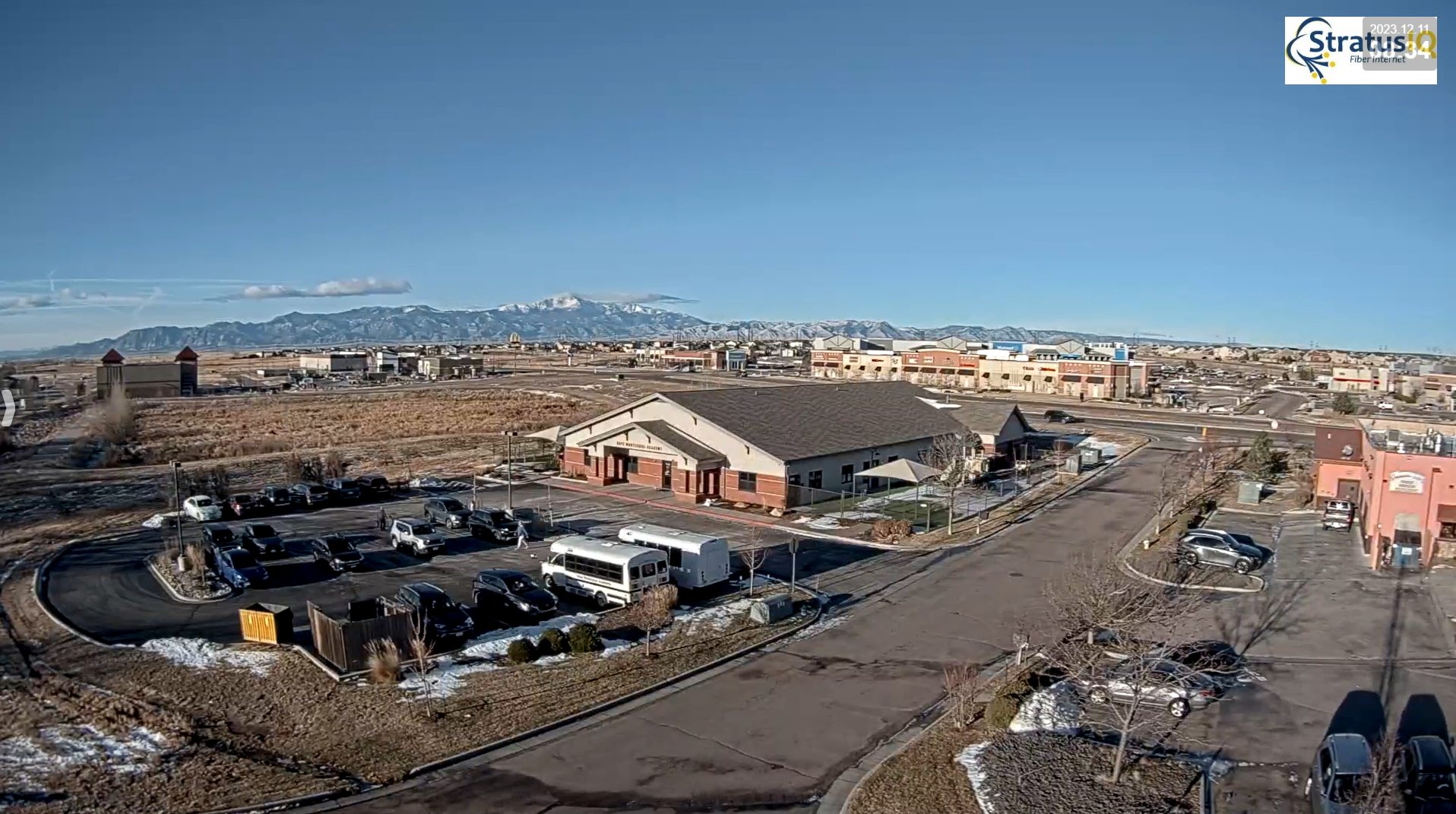By Jon Huang
In 2023, the El Paso County Coroner’s office, located at 2741 E. Las Vegas St., across the street from the county jail, investigated 6,036 cases, conducted 1,563 autopsies for 20 counties, nearly one-third of the state; 993 of these autopsies were El Paso County citizens.
Dr. Emily Russell-Kinsley is the new county coroner and a board-certified forensic pathologist. Prior to her current position, she was the county’s deputy coroner for 14 years. In her office hangs a painting of a woman gowned in black, birds on both arms, standing in a trance-like state. To Russell-Kinsley, the woman exhibits a stability and tranquility as she exists in harmony with her surroundings.
Growing up near Stillwater, Oklahoma, her father was a radiologist at the local community hospital.
“I was surrounded with medicine constantly.”
Growing up a physician’s kid and knowing too well the sacrifice involved in medical training, Russell-Kinsley’s path into medicine wasn’t straightforward.
“I had this struggle of do I want to be a physician or do I want to be a stay-at-home mom, and so it took me some time to work through that,” she said. “It was something I had to find out on my own.”
Russell-Kinsley studied accounting and one semester into graduate school, she decided it wasn’t for her. In time, she found her own road back into medicine in a specialty that gathers information from the dead to share with the living.
Forensic pathologists investigate the causes of unknown deaths, gathering evidence through autopsies, which involve external and internal examinations of the deceased, examining specimens under a microscope and running additional medical tests on the bodies. Depending on how complicated the case, complete autopsies can take up to two months to complete.
Medical training in this field can take up to nine years. Unlike many medical subspecialties where more training begets higher pay, forensic pathologists often take pay cuts to specialize in this often-under-publicized field.
Medical training in this field can take up to nine years. Unlike many medical subspecialties where more training begets higher pay, forensic pathologists often take pay cuts to specialize in this often-under-publicized field.
Besides physicians, the coroner’s office includes a dedicated staff of 30. This begins with the office staff. Then there are the death investigators who gather initial facts, do the initial assessment on scene and are on call 24/7. The morgue staff assists in processing the bodies, which can involve cutting skulls open with a saw to get to the brain or chopping collarbones with a pruner to access the chest cavity to examine the heart and lungs. Toxicologists look for chemicals or substances contributing to a person’s death, and a histologist prepares tissue specimens for examination under a microscope. Volunteers, students and pathology residents from Ft. Carson, the University of Colorado at Colorado Springs and Penrose Hospital also assist in the morgue.
In Colorado, the county coroner is an elected official who investigates and assigns cause of death in cases of unexplained, unexpected or non-natural deaths. This also includes industrial accidents, deaths occurring in the custody of law enforcement and those involving public health threats. Current state legislation requires counties greater than 150,000 to elect coroners with a medical background either as a board-certified death investigator or forensic pathologist, something that is lacking in coroners in many other states and in smaller counties in Colorado.
Russell-Kinsley said her medical background helps in situations when the initial reported cause or manner of death doesn’t align with the physical and circumstantial evidence present. This issue is magnified because of the number of counties relying on El Paso County for autopsies and additional investigations. Her experience also helps her discern which cases would or wouldn’t benefit from autopsies. In cases where the benefit of an autopsy is unclear, the additional information can be invaluable to the loved ones and families involved.
“You’re never going to error getting an autopsy,” she said.
At times, forensic pathologists can be subpoenaed to report on medical facts in civil and criminal legal proceedings. In ideal situations, Russell-Kinsley has had open conversations with lawyers about goals and limitations of the evidence. In others, she has experienced the tension of objectively reporting on medical findings in a legal environment that prioritizes building a winning case over acknowledging the inherent complexity of a situation.
“Autopsies answer some question but often raise more,” she said.
On a Colorado death certificate, there are five main reportable manners of death —natural, accidental, suicide, homicide and undetermined. Yet, these categories alone don’t always tell the whole story. Sometimes the immediate cause of death is precipitated by chronic underlying medical pathologies. Sometimes, granting priority to any one factor is impossible.
“Sometimes, we have to be comfortable with the gray,” Russell-Kinsley said.
In recent years, the coroner’s office has worked with local organizations to provide additional data pertaining to suicides and drug-related deaths with the aim of advancing preventative efforts within the community. These might include details about prior military service among suicide victims, homelessness or circumstances around pediatric deaths.
“We started asking those questions because clearly people in the community have questions about these things,” she said.
Because of her training, Russell-Kinsley has a healthy respect for everything a person consumes, having seen the adverse reactions they can create. One of her first cases involved an individual who died after receiving an injection of a prescribed medication.
“Everything carries risk, all these medications that we take, any injection that we get, every surgery, it all carries risk,” she said.
As for the years ahead, like many health care related fields, the department has undergone a period of transition and turnover with staff retirements and departures with an ever-increasing demand for services.
The county currently employs three forensic pathologists and contracts with one other, but based on current volume, the county is approved for six pathologists and they are actively recruiting. To retain the quality of examinations, there are limits on the number of autopsies physicians can perform a year. Filling spots can be a challenge given the limited number of physicians in the field and higher pay in the private sector.
For Russell-Kinsley, the department’s current season is one of prioritizing her team’s health and well-being. In a profession ever-exposed to the more gruesome elements of death, acknowledging burnout and limitations are necessary to fostering sustainable growth. To her, this goes hand in hand with continuing to address ongoing community needs and is an opportunity to seek balance amid the more somber and dark aspects of the profession.
“My staff is a group of amazing, committed people who all really have a passion about the work that we do,” Russell-Kinsley said. “You couldn’t do this work if you didn’t have a passion (for) helping people in the way that we do. I’m perfectly fine with people not thinking about our office until they’re exposed to it. No one should have to carry the weight of this … we do that for the community.”
For more information on the Coroner Office’s work, check out the 2023 Coroner’s report:






